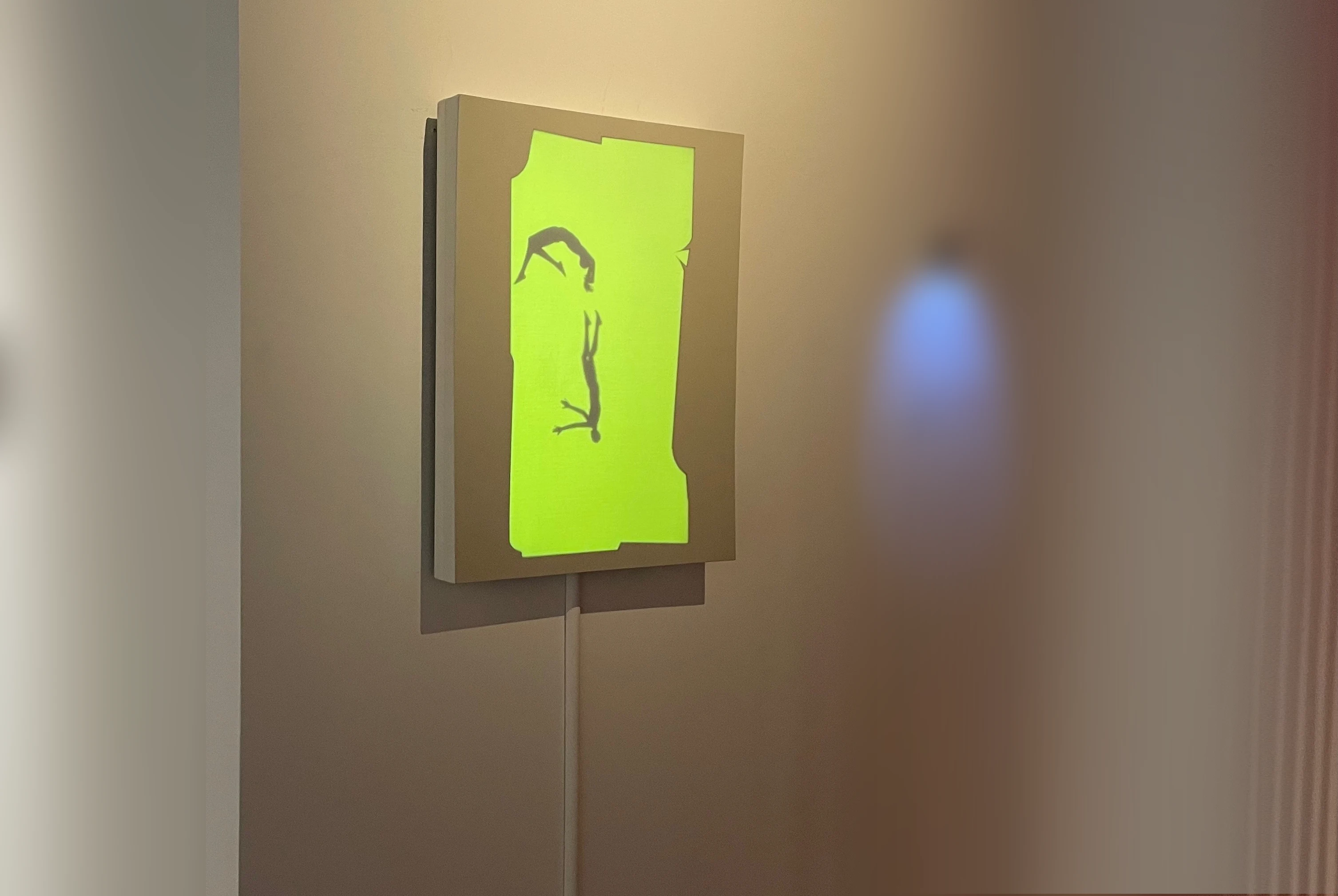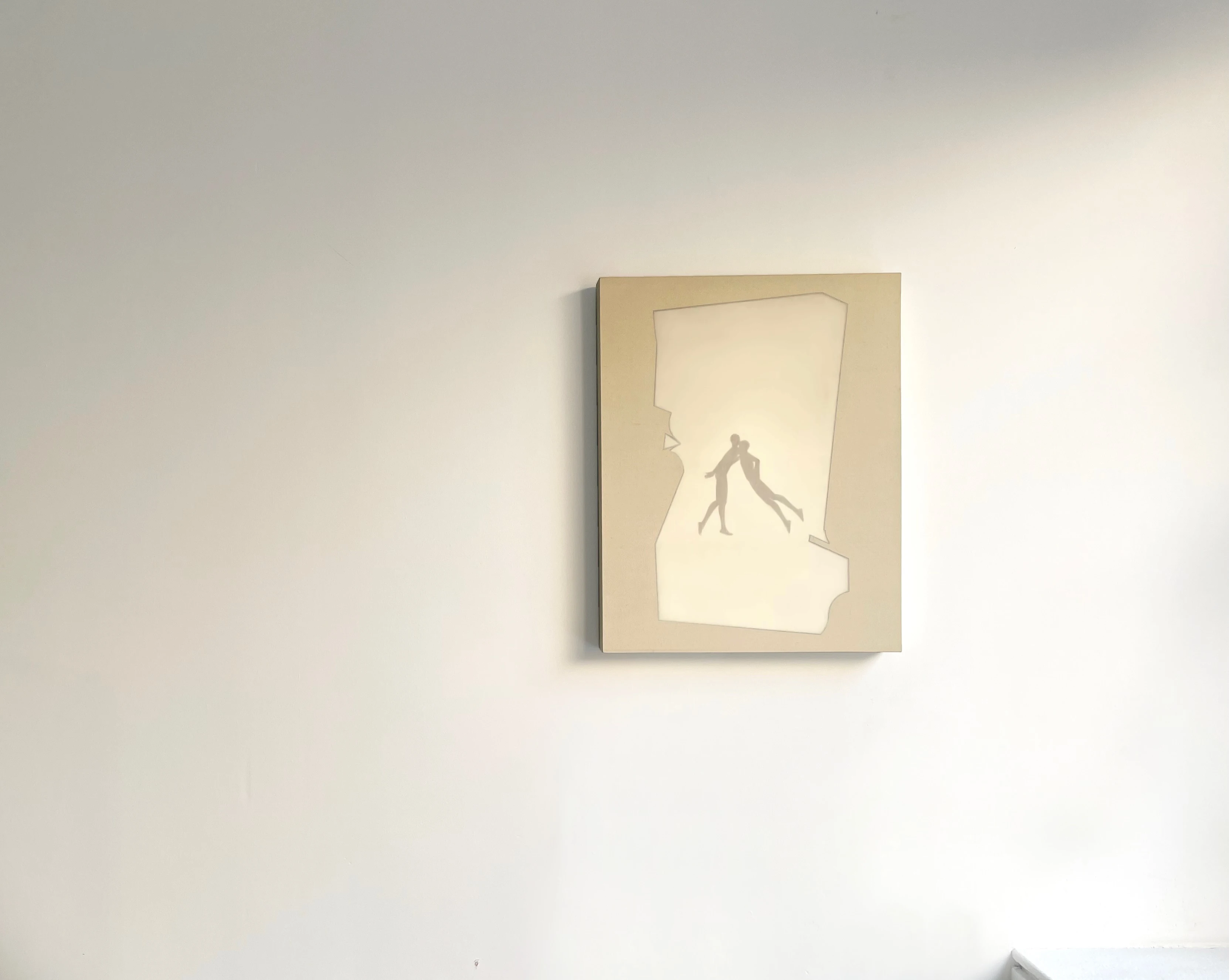Emotive Ecosystems
Complexity, in contemporary discourse, consistently involves a systems-level perspective. From intricate biological processes and diverse ecosystems to vast cosmological interactions, complex systems emphasize interconnectedness and interdependency as an essential means to measure, model, and understand.
The goal of these artworks is to provide real time representations of adaptive complex systems. They aim to illustrate them on an emotional plane, through human silhouettes that move without apparent weight. As they navigate, the silhouettes interact with each other and the boundaries of their environment, exhibiting different personalities. The number of scenarios which will develop in each artwork is nearly infinite, the movements impossible to predict, and unlikely to ever repeat.
Light Touch
The interactions between the two characters lean towards harmony, with algorithmic restrictions on how the environment's boundaries affect them. As a result, the figures move fluidly while navigating the space. They adjust to boundaries as they encounter them and continue their movement, with resilience. Over time, each figure seems to have a sense of purpose that necessarily involves the other.
Originally built and programmed at Arroz Estudios in Lisbon. Exhibited at the Center for Contemporary Arts in Santa Fe as part of Currents New Media 2022.
Video by Daniele Grosso
Volition
The two figures are placed in an environment that consistently nudges them to a central point. When they come into proximity, they repel one another, moving in opposing directions. This creates a perpetual loop of attraction and repulsion, with the characters continuously adjusting their paths in response to each other and the external pressures.
Programmed and built during a residency in Mexico City, exhibited at Jo-Hs Gallery.
Prism & Inland
The characters are consistently drawn to the perimeter of their space, guided by attraction points that circulate in both clockwise and counterclockwise directions along the boundaries. One character has greater mass and momentum, whereas the other encounters resistance due to heightened friction. The weightier character often sweeps the other along its trajectory. The more resistive character halts intermittently, seemingly anticipating its next involuntary journey.
Programmed and built in Chicago for Gruen Galleries.
Forecast
The figures share their environment with six large gears, which respond to their contact in different ways: while some gears offer resistance and friction on contact with either figure, others only interact with one. The two characters tend to stay separated from one another for extended periods of time. On the infrequent occasions when their paths do converge, their meetings are brief.
Built in Chicago for Thomas Masters Gallery.



